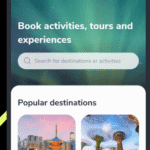The educational landscape is constantly changing, and that means schools must keep up with the latest technology. While many students dread having to learn new software or hardware, it’s actually a good thing. In this blog post, we will explore how to use the latest technology in school without losing your mind. From online learning to mobile apps, we’ll teach you everything you need to know so you can stay ahead of the curve and improve your education at the same time.
What is a Chromebook?
Chromebooks are devices that run on Chrome OS, an operating system based on Google’s Chrome browser. Chromebooks have a simplified user interface and do not require installation of software like Windows or Mac OS X. They are lightweight and easy to carry around, making them ideal for students who want to take their education with them wherever they go.
Chromebooks also come preloaded with many educational tools, such as Google Docs and Sheets, which make it easy for students to get started using the latest technology in school. In addition, Chromebooks have built-in security features that make it difficult for hackers to access your data.
What are the benefits of using a Chromebook in school?
Chromebooks are perfect for students who want to stay on top of their education while on the go. Chromebooks have a variety of benefits that make them an ideal choice for students in school. Here are some of the most important reasons to use a Chromebook in school:
1. Low Costs: Chromebooks are much cheaper than other laptops, making them an affordable option for students.
2. Fast Loading Times: Chromebooks have fast loading times, so students can get back to studying quickly.
3. User-Friendly Interface: Chromebooks have user-friendly interfaces that make it easy for students to use them.
4. Wide Range of Applications and Services: Chromebooks come with a wide range of applications and services, so students can find what they need without difficulty.
5. Versatility: Chromebooks can be used for a variety of tasks, making them versatile choices for students in school.
How to use a Chromebook for school
Chromebooks are a great way to keep up with the latest technology in school without losing your mind. Here are some tips for using Chromebooks in school:
1. Get an account and create a Google account. Chromebooks use Google accounts, so you need to create one if you haven’t already. You can then use Gmail, Drive, and other Google services on your Chromebook.
2. Download Chrome OS. This is the operating system that runs on Chromebooks. You can download it from the Chrome Web Store or by using a bootable media (such as an ISO file). Once you have it installed, open Chrome and sign in with your Google account.
3. Activate your device. After installing Chrome OS, you need to activate your device by entering your PIN number or password when prompted. This activates the device and sets it up with your schools settings and preferences.
4. Set up security restrictions. You may want to restrict access to certain websites or apps on your Chromebook so that students don’t get too carried away while using their devices in school. To do this, open Settings > Security > Restrictions and set up rules as you see fit.
Common problems with Chromebooks in school
Chromebooks are becoming more and more popular in the schooling world, but like any new technology, there are some common problems that students encounter when using them in school. Here are four of the most common problems with Chromebooks:
1. Lack of storage space. Chromebooks come with a limited amount of storage, so if you need to store a lot of schoolwork on your device, you may have to make some sacrifices.
2. Problems with connecting to Wi-Fi. Some schools have strict rules about how many devices can be connected to their network at once, and Chromebooks often don’t meet those requirements. If you’re having trouble connecting to Wi-Fi at school, try turning off your device’s Wi-Fi and restarting it—sometimes that’ll solve the problem.
3. Issues with apps. Many Chromebooks don’t come bundled with many useful apps, so students who want to use the latest textbooks or research tools may have to find alternative solutions. Check out the app stores available for your device for recommendations on compatible apps.
4. Limited functionality outside of Chrome OS. Many Chromebooks don’t offer full compatibility with other programs or websites, so if you want to do something outside of the usual Google classroom experience, you may need to invest in an additional device or software supplement .
Conclusion
Technology has become an essential part of our lives, and it is no surprise that many students feel overwhelmed when trying to learn how to use it while also keeping up with their studies. Thankfully, there are a number of ways to make learning technology easier without losing your mind. For example, using online tools like Khan Academy can help you understand complex concepts in a way that is both accessible and engaging. Additionally, apps like Evernote allow you to capture notes, ideas and links as they come up so that you don’t have to waste time searching for them later. With the right tips and strategies in place, mastering technology will not only be possible but enjoyable as well!








